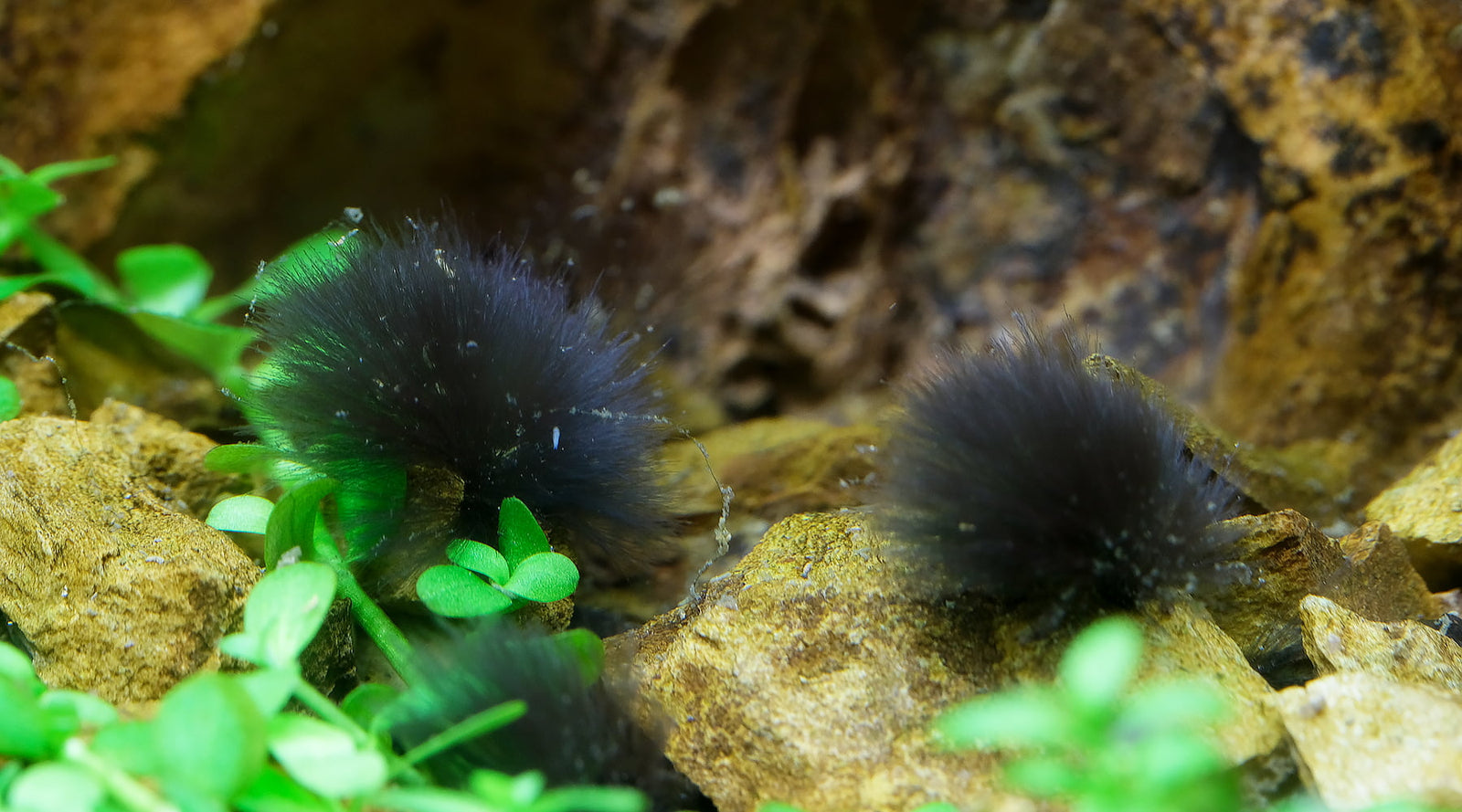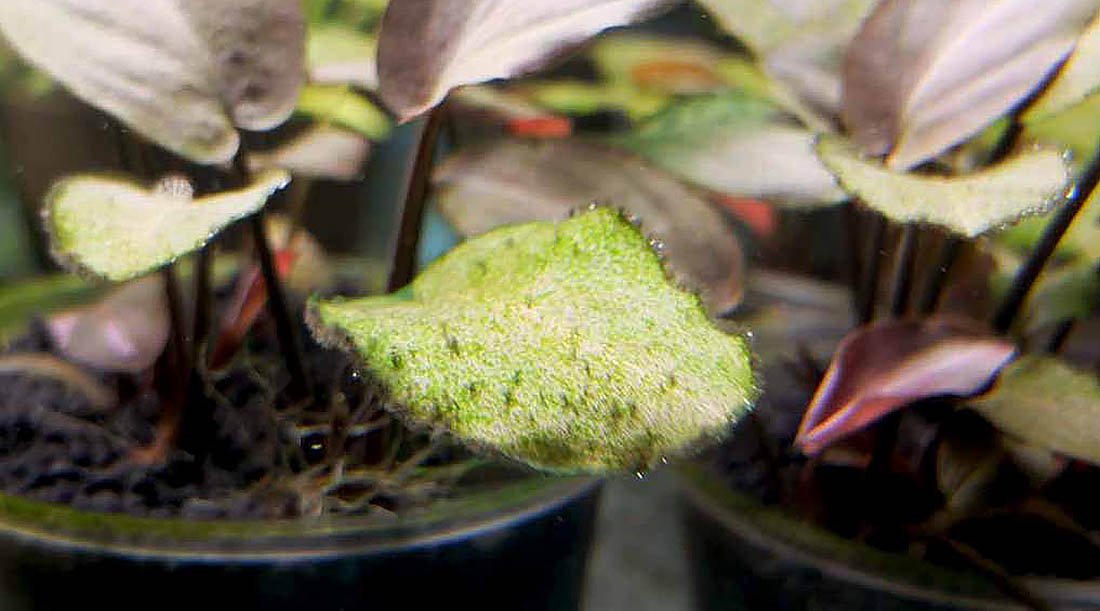Black beard algae appears as short reddish or black turfs. They first appear as small furry black dots as small as the tip of a pen, often found on the edges of older leaves of plants that aren’t growing optimally( see below) , blossoming into full size as those on the top picture.
Early signs of BBA
High levels of organic waste & detritus in the planted tank encourages BBA to spawn. If they are found attached to plants, it is most commonly caused by stress induced by fluctuating CO2 levels. Poor plant health is the other common cause. Healthy plants are quite resistant against it – in such cases, BBA will be found attached to hardscape instead.
If found on hardscape or driftwood (often found in fast flow areas in the path of CO2), it is sometimes due to aquarists obsessed with overly strong flow. It’s commonly found on filter outflows, and on CO2 diffusers (which are often placed in the path of high flow).
Barr report suggests that BBA strives when CO2 is present but at low levels; between 10-15ppm. Non injected tanks (low tech tanks) and tanks with higher levels of CO2 are less vulnerable – to this end, it seems to occur most often in tanks where CO2 injection is used but optimized poorly.
It has little connection to nutrient levels or light spectrum. Both tanks with very lean water column fertilization and rich water column fertilization are vulnerable to it. It has very strong correlation to organic waste and CO2 fluctuations.
American flagfish, mollies and SAE (Siamese algae eater) pick at it when there are no tasty alternatives. However, they are seldom adequate solutions.
COMMON CAUSES
- Fluctuating CO2 levels in the tank
- High amount of organic waste/dirty tank
- Stressed plants/old growth
- Systemic instabilities that lead to plant stress; poor water quality, harsh use of biocides etc
- Excessive flow with heavy misting (observe if it spawns in areas that are directly in path of flow), especially on slow growers/moss
SOLUTIONS
- Regularly vacuum substrate surface while stirring up debris with turkey baster (see below) to reduce organic debris – this makes a big impact
- Find ways to stabilize CO2 levels. Generally speaking, higher injection rates create more stable CO2 levels, so increasing CO2 injection is generally recommended.
- Spot dose H2O2 or Excel directly onto BBA at first appearance to prevent spreading
- Pruning and replanting of healthy tops, discard old growth
To learn more optimising CO2 gaseous exchange and flow patterns, read here.


